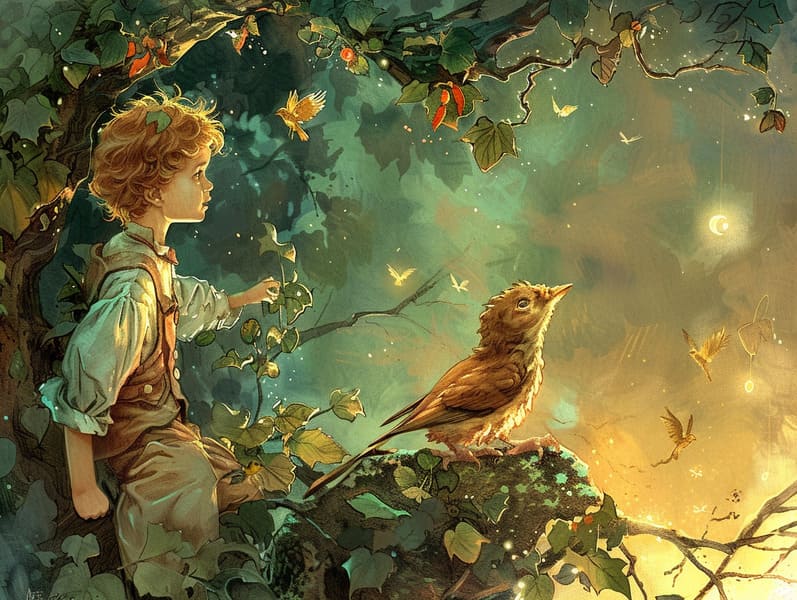The Genesis of Old Fairy Tales with Their Immortal Grandeur.
The Genesis of Old Fairy Tales with Their Immortal Grandeur.
Blog Article

Traditional fairy tales have timeless appeal. These narratives have been told from one generation to the next well before they were ever documented. They emerged from a variety of cultures, including American traditions. They were initially transmitted among elders, often carrying themes and messages concerning the societal norms and beliefs of the time.
The Grimm brothers, Jacob and Wilhelm Grimm, were among the first to assemble many of these beloved stories. Their compilation, "Grimm's Children's Stories," included tales like "The True Bride," "Little Brother and Little Sister," and "Snow-White and Rose-Red," which have since become pillars in the world of famous fairy tales. Similarly, Hans Andersen's fanciful tales, such as "The Story of the Little Mermaid," and "The Duckling that Could," have enchanted hearts worldwide, cementing their place in the pantheon of classic fairy tales.
Though they are centuries old, these tales remain as important as ever, especially as children's bedtime stories. These charming stories are now available in various formats, including richly illustrated books, fantastical animations, and web-based fairy tales.
Their ongoing significance can be linked to several charming aspects:
Vital Lessons: Traditional fairy tales often convey important moral lessons. Stories like "The Wolf and the Liar" teach the value of truth, while "The Race of the Tortoise and the Hare" stress the traits of resolve and modesty. These narratives offer the young clear distinctions between ethical and unethical, building their moral compass in a mild yet important way.
Compassion and Knowledge: Classic fairy tales frequently include protagonists facing obstacles and hardships, urging listeners to identify with their struggles and boost their triumphs. For instance, "Beauty and the Beast" shows us the benefit of seeing beyond the surface to know the true being of a character, nurturing empathy and appreciation.
Cultural Knowledge: Many timeless fairy tales are steeped in the cultural contexts from which they sprang. Reading these stories can provide captivating looks into different social structures, fostering a sense of international awareness and acknowledgment.
Creativity and Fantasy: The supernatural elements in old fairy tales—wizardry and magic—generate children’s imaginative ideas. These narratives take readers to fantastical realms, activating inventive dreams and a sense of astonishment that persists a lifetime.
Old fairy tales are not only charming but also illuminating. They act as delightful tools in building various cognitive and affective skills in kids. When fairy tales are told out loud, they improve speech development by introducing new words and complicated sentence structures. This practice also cultivates hearing abilities and attention, as children concentrate deeply, anticipating to see what happens next.
Furthermore, conversing about the themes and characters of classic fairy tales can strengthen evaluative skills and problem-solving abilities. The young are instructed to pinpoint patterns, make predictions, and realize cause and effect. These discussions also benefit kids reveal their thoughts and feelings, fostering their emotional intelligence.
In today’s modern era, the abundance of online fairy tales has made these fairy tales more acquirable than ever. Internet resources and software give extensive collections of Grimm's fairy tales that can be explored get more info or listened via anytime, anywhere. Fairy tales voiced are particularly sought after, featuring an captivating way for little ones to take part in these charming tales. Spoken stories and read-to-me stories lead characters and settings to life, often joined by magical melodies and instrumentals that enhance the tale-telling adventure.
The timeless charm of classic fairy tales lies in their ability to shift to contemporary times while holding onto their key morals. Contemporary renditions of these narratives often introduce more inclusive protagonists and modern settings, making them relevant to today’s audience. However, the key lessons of heroism, compassion, and fairness remain unchanged, continuing to connect with young listeners of all ages.
Old fairy tales also offer a sense of reassurance and recognition. They confer a ordered narrative with a distinct beginning, middle, and end, often closing with the solving of conflicts and the triumph of rightness over wrongness. This uniformity can be consoling for young readers, granting a sense of steadfastness in an fluid world.
Timeless fairy tales continue to mesmerize and edify new generations, maintaining their splendor and importance in modern society. As nighttime stories for kids, they showcase a perfect blend of allure and teaching, boosting moral values, empathy, and creativity. The existence of digital fairy tales and the commonness of fairy tales voiced assure that these ancient fairy tales remain attainable to new generations.
By defending and spreading these narratives, we continue to commemorate the rich tapestry of tradition and cultural heritage. Whether you are reading a colorful picture book, seeing a electronic library, or listening to an audio story, the splendor of Grimm's fairy tales is always within reach. These stories point out of the unceasing strength of storytelling and its ability to connect us across time and space.
Even if you are perusing a vividly illustrated book, seeing a cyber collection, or listening via an narrated book, the magic of Grimm's fairy tales is always within reach.
These narratives teach us of the everlasting influence of storytelling and its ability to tie us across centuries and lands, casting a charm that charms and informs alike.